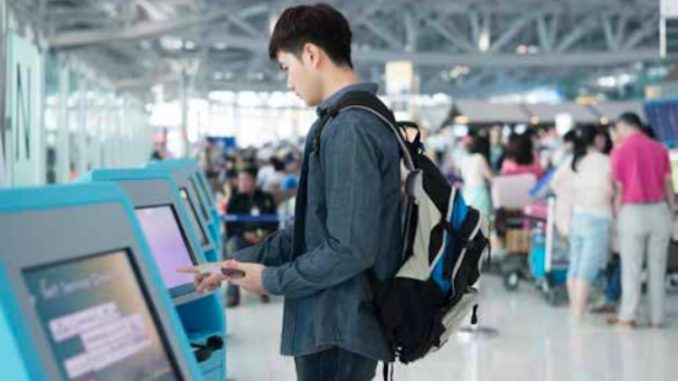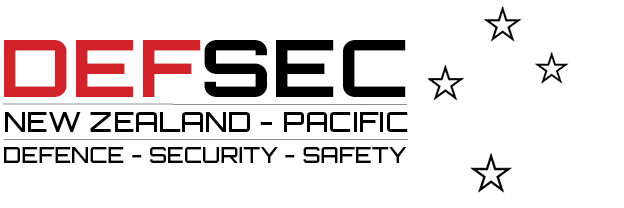
Although proven in other law enforcement and security applications, behaviour detection, writes editor Nicholas Dynon, remains a controversial feature of aviation and border security.
Aviation and border security authorities at international airports play a critical role in protecting borders and ensuring the skies are safe. This role has come to the fore since 9/11, with more stringent checking of passengers and restrictions on carry-on luggage becoming a major feature of the post-2000 passenger experience.
Understandably the checks aren’t particularly popular among frequent travellers, who find having to take off their shoes and belt and having to pass through a metal detector – and sometimes having to stand in a millimetre-wave scanning device and have one’s luggage chemical residue checked – a bit of a hassle.
There are clear downsides to security at the border, but most of us begrudging accept that it’s a fair price to pay for our safety.
Contemporary airport security theatre is as much about deterring would-be perpetrators as it is about apprehending them. One aspect of this theatre though that many travellers do have a real problem with is the selection of certain passengers for enhanced screening based on ‘profiling’ by aviation and border security authorities.
It’s something that people belonging to particular ethnicities and religions can get quite unhappy about, and for good reason. As Newshub reported in late September, Syrian-Kiwis are getting pretty fed up with profiling at Auckland Airport, subjected to lengthy questioning about their views on ISIS and terrorism, and having to surrender their phones and passwords for invasive searches.
There’s no shortage of media reports documenting criticisms of airport authorities for their profiling of passengers for more rigorous screening based on racial and religious indicators. But worse still, a rising tide of official and academic research is asserting that the behaviour detection techniques used as part of the profiling process are downright ‘unscientific’ and ‘flawed’.
Behaviour detection
In the US, the Transport Security Administration (TSA), part of the Department of Homeland Security (DHS) began implementing its Behaviour Detection and Analysis (BDA) program (originally called Screening Passengers by Observation Techniques, or SPOT) in 2007.
According to the TSA, the goal of behaviour detection is to identify higher-risk individuals and route them toward additional screening. ”Unlike other security capabilities, behaviour detection techniques are unobtrusive, applied in real time, free of large equipment footprints, and threat-agnostic (i.e. focused on the adversary versus the adversary’s weapon), allowing implementation in a variety of settings and configurations,” states a TSA report.
TSA’s airport-based Behaviour Detection Officers (BDOs) look for verbal and non-verbal behaviours that are contextually atypical and associated with a fear of discovery or the stress or anxiety that comes with the execution of a terrorist attack, or behaviours associated with the concealment of physical items or knowledge.
Kept under wraps for several years, the TSA’s checklist of behavioural indicators was leaked to the media in 2015. These included a diverse range of 94 behaviours, ranging from the obvious to the seemingly absurd, such as:
- Exaggerated yawning
- Excessive complaints about the screening process
- Excessive throat clearing
- Widely open staring eyes
- Displaying exaggerated emotions
- Wearing improper attire for location
- Whistling as the individual approaches the screening process
- Gazing down
- Appearing not to understand questions
- Exaggerated or repetitive grooming gestures
- Face pale from recent shaving of beard
- Rubbing or wringing of hands
- Appears to be in disguise
- Arriving late for flight
These standardised indicators are intended to provide BDOs with a basis to make objective security-related decisions, such as referring an individual to additional screening if a predefined threshold is reached.
Unscientific
Since its introduction, the BDA program has attracted continued controversy. In November 2013, a Government Accountability Office (GAO) report found that there was no evidence to back up the idea that behavioural indicators “can be used to identify persons who may pose a risk to aviation security.” After analysing hundreds of scientific studies, the GAO concluded that “the human ability to accurately identify deceptive behavior based on behavioral indicators is the same as or slightly better than chance.”
It was for this reason – and partially as a result of the GAO’s 2013 report – that funding for BDOs was slashed by the DHS from 3,131 FTEs to around 2,393 in 2016. BDOs were also integrated into the wider TSA workforce, including being assigned travel document checking duties. The TSA also revised and shortened its list of behavioural factors from 94 to 36, and sought to bolster evidence in relation to the efficacy of these.
Enjoying this article? Consider a subscription to the print edition of New Zealand Security Magazine.
These changes, however, did nothing to dampen the GAOs interest in TSA’s BDA program. In July 2017 it released a paper to the US House of Representatives Subcommittee on Transportation and Protective Security titled Aviation Security: TSA does not have valid evidence supporting most of the revised behavioural indicators used in its behaviour detection activities.
According to this paper, the GAO found that 98 percent of sources cited by TSA in support of its revised behavioural factors list did not “provide valid evidence applicable to the specific indicators that TSA identified them as supporting.” Of the 178 sources cited, only 15 were found to constitute original research meeting generally accepted research standards.
Biased
Like the GAO, the American Civil Liberties Union (ACLU) has been a long-time critic of the TSA’s use of behaviour detection. According to the ACLU, the unscientific nature of BDA leaves is unacceptably susceptible to subjective bias.
“Biased profiling allegations have come not only from travelers, but also from behavior detection officers themselves,” states a February 2017 ACLU report. “One former officer said the TSA’s behavior detection program is a “license to harass,” and another labeled it “a racial profiling program.”
“Various documents and materials in the TSA’s files reflect a disproportionate focus on, and in some cases overt bias against, Arabs, Muslims, and those of Middle Eastern or South Asian descent,” it continued. This is despite the TSA and DHS’s continued insistence that its profiling is based on behaviour, not appearance.
In relation to its “If You See Something, Say Something” public awareness campaign, for example, the DHA explains that it respects citizens’ privacy, civil rights, and civil liberties “by emphasizing behavior, rather than appearance, in identifying suspicious activity.”
Rafi Ron, the former Israeli airports security chief and behaviour detection pioneer, explained the fallacy of racial profiling succinctly in an interview with CSO back in 2006:
“My experience at Ben Gurion Airport in Tel Aviv has led me to the conclusion that racial profiling is not effective. The major attacks at Ben Gurion Airport were carried out by Japanese terrorists in 1972 and Germans in the 1980s. [They] did not belong to any expected ethnic group. Richard Reid [known as the shoe bomber] did not fit a racial profile.”
It is important to note that the TSA’s BDA is just one behaviour detection methodology. There are many others, including those developed by private security firms – such as Rafi Ron’s Behaviour Pattern Recognition (BPR) – and by governments and international organisations, such as the European Civil Aviation Conference
It is also important to note that despite being heavily contested in the aviation and border security space, the use of behaviour detection in other law enforcement and private security applications has received more positive recognition.





